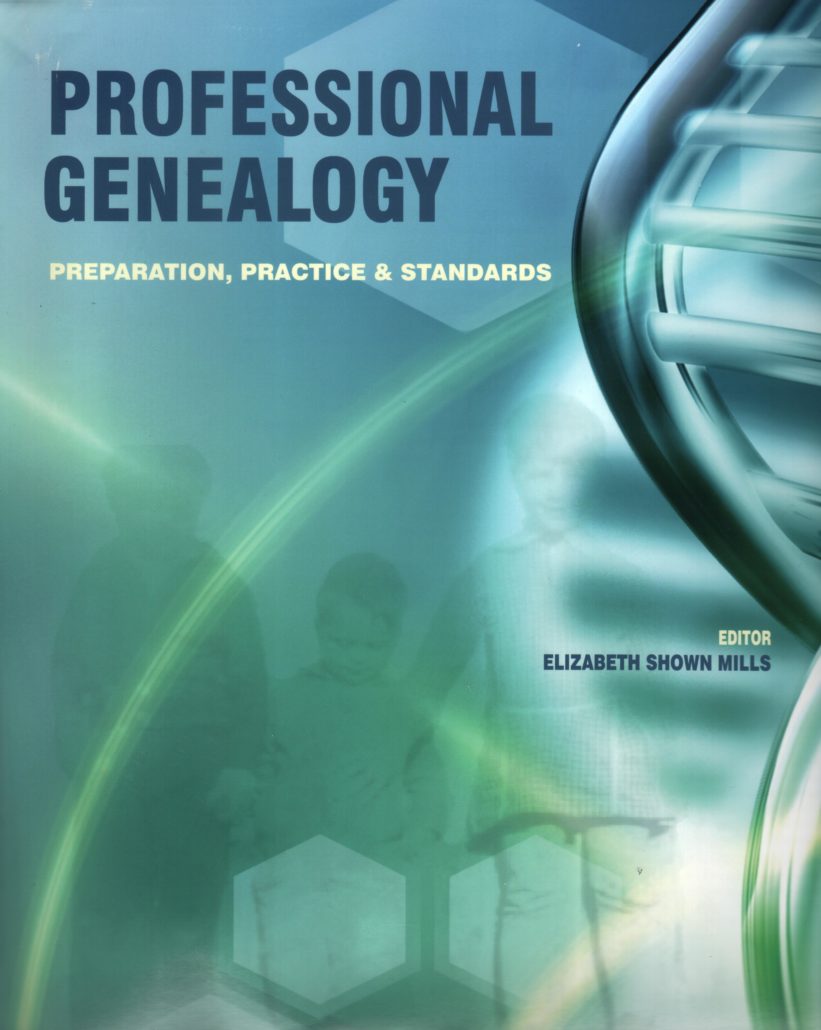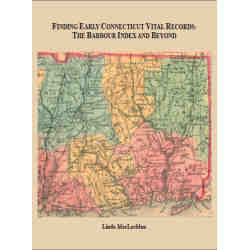
Are you wondering what to do once you finish tracing your personal family tree? Are you helping someone else (maybe an elderly friend) research his or hers? Have you found your bliss in genealogical detective work, and now you want to take it to the professional level? Maybe even make a career out of it?
If the genealogy bug has bitten you, consider going after a genealogy credential. As authors Paul K. Graham and Dawne Slater note in Chapter Three of Professional Genealogy: Preparation, Practice & Standards, “Individuals apply for genealogical credentials for a variety of reasons. Most are working in the field in one capacity or another, full time or part time. Some are hobbyists who undertake the process for personal satisfaction to ensure they are following best practices and that their research methods are sound . . . All in all, credentialed genealogists are involved in a wide variety of activities.” Such activities range from consulting with clients, to lecturing and teaching, to writing and editing, to serving as board members or officers, and many more. Regardless of which genealogical credential you achieve, you will be joining with others in abiding by a code of ethics, or code of practice, that both help you to keep your own work reliable and benefit the profession of genealogy as a whole.
Chapter Three of Progen PPS goes on to discuss the credentialing practices of six bodies, three American and three International: the Board for Certification of Genealogists, the International Commission for the Accreditation of Professional Genealogists, the Council for the Advancement of Forensic Genealogy, Accredited Genealogists Ireland, the Association of Genealogists and Researchers in Archives (UK), and the Association of Scottish Genealogists & Researchers in Archives. Graham and Slater discuss the value of these credentials, each organization’s standards and application process, requirements for acceptance and removal, etc. To give you a fuller idea of what it means to be credentialed , we have excerpted pp. 71-72 from Progen PPS, which describe the Board for Certification’s application and portfolio.
BCG application
To obtain the Certified Genealogist credential, you will prepare a portfolio of work samples that demonstrate your skills and knowledge. You begin the process by filing a preliminary application with the Board- a simple form with personal information and details about the time periods and geographic areas in which you work. If you use languages other than English in your research, you will want to report that skill as well. Upon receipt of your preliminary application, BCG will provide you with material to proceed with the compilation of your portfolio. You then have one calendar year to submit your portfolio for evaluation. (That time limit can be extended, if exigent circumstances exist.) While “on the clock,” you will receive a subscription to OnBoard and membership in the networking email-based group ACTION (Aids to Certification Testing: Interactive Online Networking). While ACTION does not offer personal coaching on the work that goes into your portfolio (BCG does not “teach to the test”), this forum provides a means by which applicants can engage with each other and with certified associates , discuss standards in general, obtain peer support, and get clarification on testing issues as they develop their work samples.
The second step in the application process is the submission of the port folio. That is your formal application for certification. This body of work will showcase your skills and demonstrate that your work products meet standards. The specific elements you must include in the portfolio are described below. With this portfolio you also will submit a signed copy of the Genealogist’s Code of Ethics. At this point, you are considered an applicant for certification. The Board has no intermediate “candidate” status you can earn bypassing a preliminary examination.
BCG portfolio
Certified Genealogist (CG)
The five key modules of the CG portfolio are as follows:
- Development activities. You will provide a list of genealogical activities and describe how each has improved your knowledge and use of genealogical standards, sources, kinship determination, and presentation of findings. These activities may include seminars, conferences, institutes, formal courses of study, home-study or online courses , professional journals read regularly, webinars attended, blogs followed, independent study on particular subjects, participation in a study group such as those for Professional Genealogy and Mastering Genealogical Proof (see chapter 2 of Progen PPS), participation in a genealogical society, and many more. Your activities would include both those you participated in as a student and those in which you were the lecturer, author, or other principal.
- Document work. In this module, you will transcribe, abstract, analyze, and develop a research plan for two documents– one provided by BCG and the other chosen by you. Both will be manuscript documents, not modem-era typed records. If you declare a geographic specialty, either in the United States or a foreign country, your BCG-supplied document will be chosen for its applicability to that area. If the stated research specialty lies in a non-English-speaking locale, your document will likely be in the prevailing language of that region. The document you choose should also reflect your specialty and enable you to demonstrate as much of your expertise as possible.
- Research report. For this module, you are asked to conduct research for another person and submit the resulting report. You will include whatever background your client supplied, develop a research plan, and conduct the research within the parameters defined by your client. Your report will include findings (negative as well as positive), the appropriate analyses, your conclusions, and your recommendations for next steps, along with document images when appropriate. (This report module is not an exercise in record-gathering. Rather, it is a demonstration of analytical research. Nor is this report a compiled genealogy assembled from the fruits of many separate research efforts. See chapter 18, for an in-depth treatment of research reports.) You must submit the report to BCG exactly as it was submitted to a client, along with the client’s letter of authorization to do the research, the client’s initial instructions, and the client’s permission to use the report in the portfolio. If you do not do client work for a fee, you may do this project for someone else on a pro-bono basis specifically for the portfolio. You should not make the mistake of submitting the first or only report you have prepared. Experience shows.
- Case study. In this module, you will present a case study using the Genealogical Proof Standard to resolve a difficult research problem involving identity or kinship. Because many challenging genealogical problems cannot be resolved by finding multiple, independently created pieces of simple direct evidence, you are asked to choose a case that features indirect evidence, negative evidence, or both to solve a difficult problem; involves significant conflicts between multiple pieces of direct evidence, with resolution of the conflicts; or resolves a conflict when direct evidence provides one answer, but indirect or negative evidence suggests a different conclusion.
- Kinship-determination project (KDP). Here, you will produce a narrative genealogy, lineage, or pedigree that uses a wide variety of quality sources. You are asked to assemble three generations of a family and place the individuals into appropriate social and historical context. For the parent-child links in two different generations, you must compose a proof argument or a proof summary to support the asserted parent child relationship.




